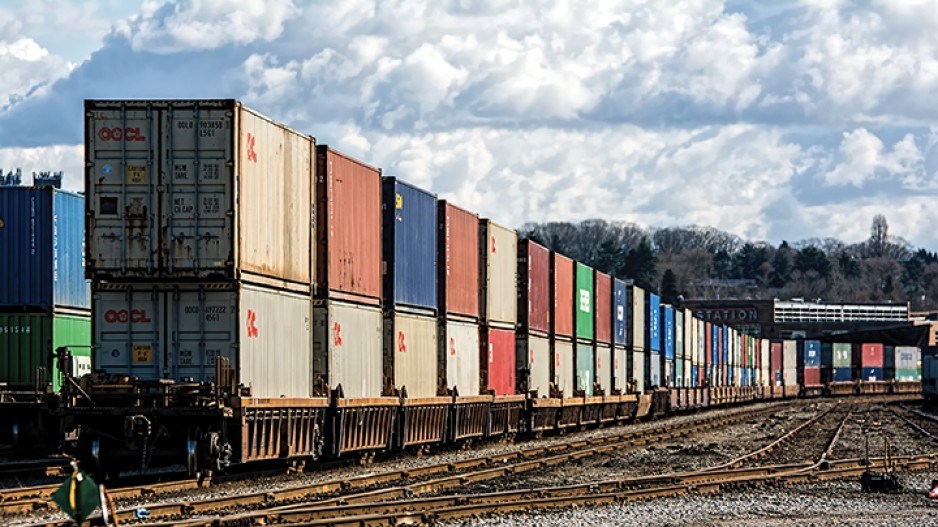A talk last week by federal Transport Minister Marc Garneau on the pandemic’s effect on Canada’s transportation and trade network symbolized what the sector has faced when his audio on a Zoom conference cut out toward the end of his talk.
“Interrupted” pretty much sums things up.
Following a series of railway and highway blockades by First Nations against the Coastal GasLink pipeline, which blocked the movement of goods in February and March, COVID-19 hit Canada’s transportation and trade networks as the pandemic shut down sectors of the economy, put curbs on trade and pretty much grounded airlines for all but cargo flights.
At the virtual forum on transportation sponsored by Deloitte and the Greater Vancouver Board of Trade (GVBOT), representatives for the Vancouver Fraser Port Authority and the Canadian National Railway Co. (TSX:CNR) said ports and railways have proven to be surprisingly resilient throughout the pandemic.
There were reduced volumes for some imports and exports, but there were also record shipments of grain through the Port of Vancouver.
Damage to the global and Canadian supply chain could have been a lot worse, it appears.
“COVID has slowed things down, but the trains are still operating, the ships are still coming into port and leaving port, the trucks are still going to the United States and coming back and going across Canada,” Garneau said. “At lower rates, it’s true.”
However, one node in Canada’s transportation network has been hammered into a virtual standstill: airlines and airports.
Airline passenger traffic volume is down more than 90%, due to global travel restrictions, and the resumption of air travel is expected to be slow.
The Vancouver Airport Authority, which planned to spend $700 million this year on airport expansion projects, has cut that amount by more than half and has also laid off 23% of its 26,000-person workforce.
Air Canada (TSX:AC) has also resorted to extensive layoffs, and quickly converted some of its passenger jets to cargo flights to stay in business. Tim Strauss, Air Canada’s vice-president of cargo, said the pandemic put the airline in “an untenable position.”
The federal government has waived airport rents for airlines, but the sector’s recovery depends on the reopening of borders worldwide.
As for the Port of Vancouver, the biggest impact has been from the cruise ship industry, said Vancouver Fraser Port Authority CEO Robin Silvester.
For Vancouver, the cruise ship industry has been effectively cancelled for 2020, though Silvester said rail and marine trade has held up better than expected.
“At the end of April, year-to-date cargo through the port was, in fact, 1% above the year-to-date volumes for the end of April 2019,” he said, adding that container ship volumes are down, but grain exports are at record levels.
“And we’re seeing strong steel making volumes, strong potash volumes in exports all around the world moving through the port.”
The port has also kept expansion projects on track, including a $400-million-to-$500-million Centerm container terminal expansion.
In the longer term, Silvester said, he hopes to see the federal government approve the Roberts Bank Terminal 2 project, which he said would generate 11,000 person years of construction work and 12,000 long-term operational jobs.
Through its National Trade Corridors Fund, the federal government has been addressing transportation bottlenecks and diversifying trade.
Two dozen projects under that fund have been identified for B.C, with $1.4 billion for transportation infrastructure and trade corridor improvements, Garneau said.
While some projects have proceeded, others have been delayed by the pandemic.
“We are looking at options to see if we can help to stimulate, through the National Trade Corridors Fund [the economy] … to see if we can use infrastructure funding in an innovative way perhaps to get those projects jump-started as quickly as possible,” Garneau said. “We realize this is one way to stimulate the economy.”




